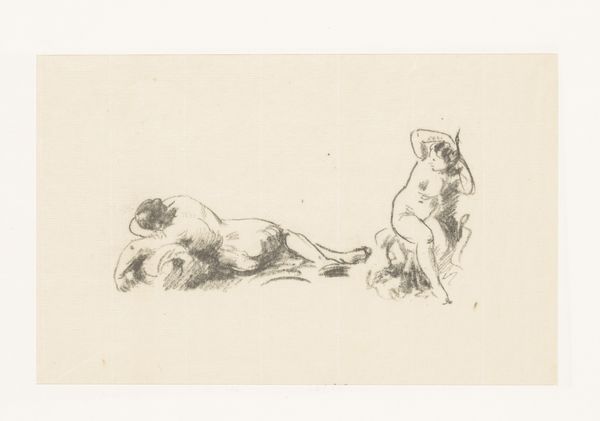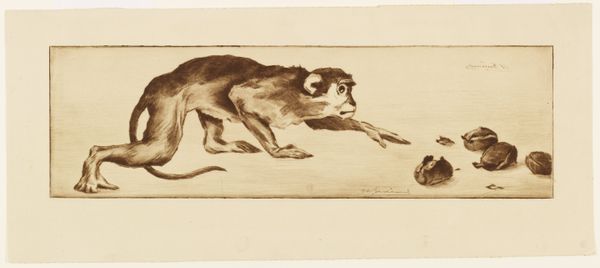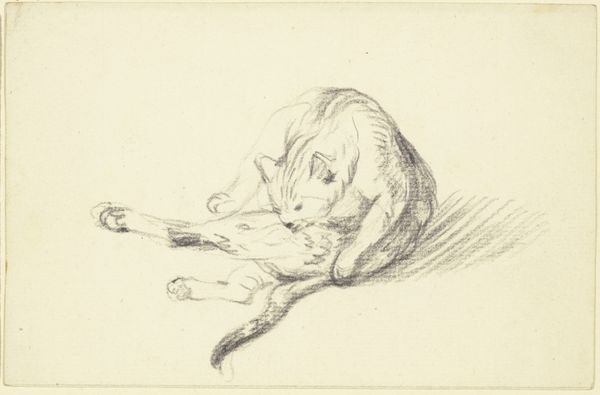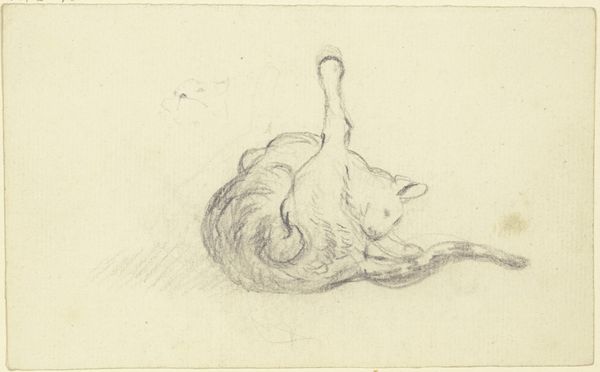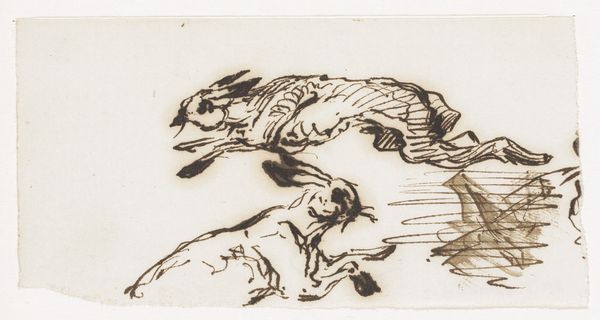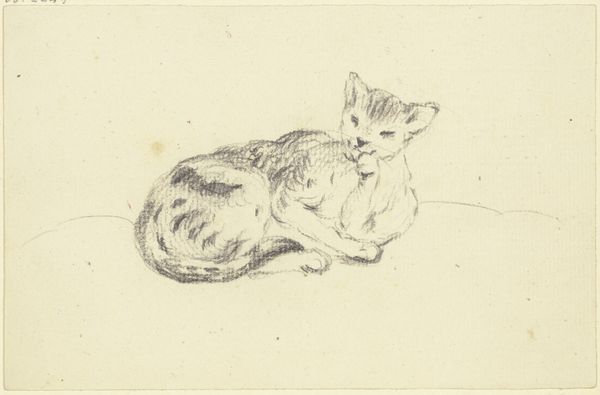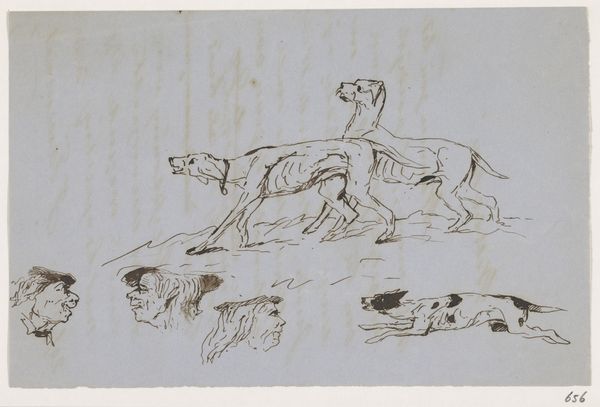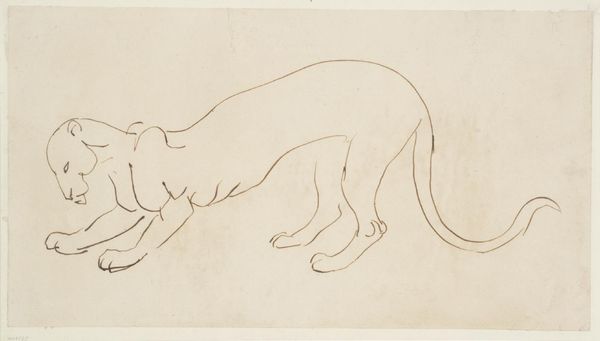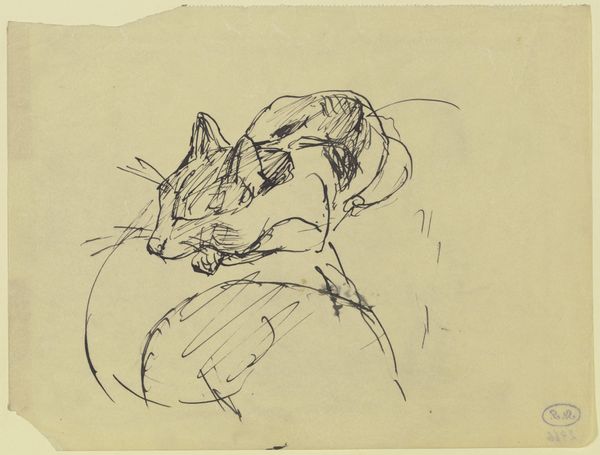
drawing, chalk, charcoal
#
drawing
#
animal
#
landscape
#
figuration
#
sketch
#
expressionism
#
chalk
#
charcoal
Copyright: Public Domain
Editor: This is "Cats," a charcoal and chalk drawing from 1914 by Alfred Schnaars. There's such an energy to it, even though it's just a sketch. What cultural echoes do you hear when you look at it? Curator: I immediately see a return to primal energies. Consider the time: 1914, just before the eruption of World War One. The cat, a frequent symbol of feminine intuition, instinct, and even untamed ferality, takes on a renewed potency. It is interesting, do you see any links to ancient Egyptian art in its silhouette? Editor: Yes, a little! The cat on the left, especially, has that almost regal bearing you see in depictions of Bastet. Curator: Exactly! The cat was sacred. Here, Schnaars seems to tap into that ancient respect, even awe. Notice the cat on the right - the loose lines suggest movement, agility. But why use only sketches, would the image not be stronger if the artist completed it? Editor: Perhaps the incompleteness adds to the feeling of fleeting energy. Like capturing a primal essence that can’t be fully pinned down. Curator: Precisely! And, do you feel Schnaars’ choice of monochrome, charcoal and chalk heightens this primal essence by eliminating the distractions of colour? Editor: It really focuses my attention on the form and gesture, yes! And now seeing that both cats, as emblems of instinct and freedom, become more potent, like a warning against the rigid structures that were about to crumble in Europe. Curator: Indeed. Schnaars seems to be saying, "Listen to your instincts, embrace the wild within," a powerful message on the brink of societal upheaval. A beautiful meditation on instinct against destruction. Editor: Thank you. That really enriches my understanding. I will keep in mind the turmoil present at the time of the artwork's creation.
Comments
No comments
Be the first to comment and join the conversation on the ultimate creative platform.
